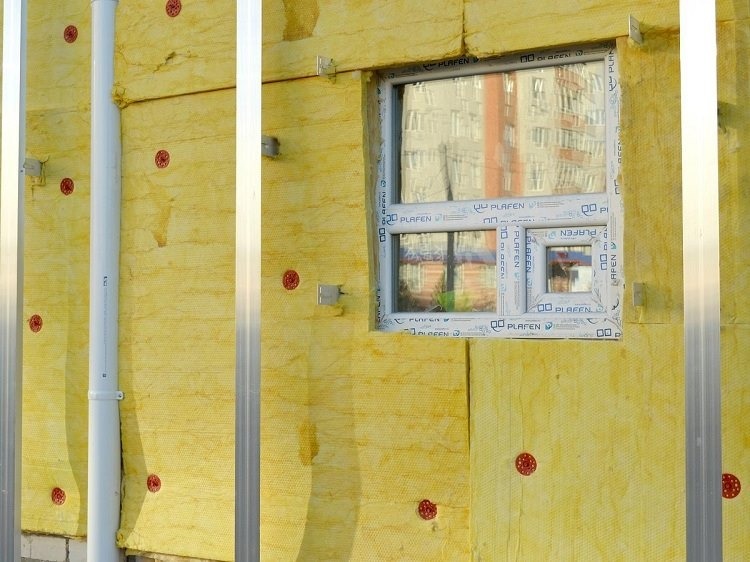What is Garage Door R-Value - and Why Does It Matter?

Insulated garage doors are a great idea for anyone tired of venting expensive heated air through the garage all winter long. An insulated garage door will also help prevent your Loveland garage door from becoming an oven during the summer and it will increase the overall value of your home. But not all insulated garage door installations are created equal and the difference depends in large part on the R-value of the door. But what is R-value anyway and why is it important?
What is R-value?
The "R" in "R-value" stands for "resistance". In this case, the amount of resistance the garage door puts up to prevent heat from flowing through it. The more resistance, the more effective the garage door is at keeping the heat inside and the higher the R-value. So R-value is important.
How R-Value is Measured
The R-value of a garage door is determined by measuring how long it takes heat to go from inside your garage through the interior face of the door panel (be it metal or fiberglass), through the insulation itself and then through the outer face of the panel.
But while that seems straightforward enough, when it comes to deciding what R-value is right for your door you still need to be on your toes. For instance, a door with an R-value of 20 should stop a lot more heat from escaping than a door with an R-value of 8, right? Not really. The door with the R-value of 8 will stop some 90% of heat from escaping while the door with the R-value of 20 will stop 96%. Not a big difference.
As a result, paying a lot more for that R-value of 20 may not be worth it. The bottom line is that if there is not much of a difference in price between the two doors then by all means you should choose a new garage door with the R-value of 20. But, if that door costs twice as much as the door with the R-value of 8, the extra expense will be hard to justify.
Other Considerations
In almost all cases you want to match the insulation in your garage door installation with the R-value of the insulation used in the rest of the garage, if indeed there is any. And that is a big if, because in most homes the attached garage is not insulated but for the wall that adjoins the rest of the house.
But even if your garage has largely uninsulated walls it will still benefit from an insulated garage door. In such cases having a door with an R-value of 20 probably isn’t worth it because of heat loss through the walls. A better idea is to get a door with an R-value of 8. It will cost less yet should make a noticeable difference in the comfort level of the garage on those extremely cold (or hot) days.
Something Else To Consider Before Buying an Insulated Garage Door
The majority of insulated garage doors have hollow steel panels that are filled with insulation. The panels are made from a single, continuous piece of steel that folds around the insulation from front to back. “What does this have to do with anything?” you ask. We’ll tell you. Because the panel is one continuous piece of steel the warm air inside hits the interior face of the panel and much of it is then conducted by the steel right around the insulation to the outside face of the panel where it vents into the atmosphere.
If you are willing to pay a little more you can find insulated garage doors whose panels contain what are called “thermal breaks”. The thermal break is a small groove built into the top and bottom of the metal panel that disrupts the smooth flow of conduction from interior to exterior or exterior to interior. It’s a simple idea that helps the door work much more effectively.
About Air Infiltration
One other thing to keep in mind is the issue of air infiltration. Air infiltration is a potentially major source of heat loss and is caused by spaces around the garage door opening. Oftentimes, homeowners will perform a DIY insulation job on their garage door, attaching cut sheets of insulation to the back of the door panels. Once the new panels are in place they are shocked to discover their garage is still ice cold and drafty. The culprit? Air infiltration caused by a worn-out or nonexistent weather seal around the door opening and/or a worn-out rubber strip along the bottom of the door. Both problems allow air to rush in around the door bypassing the insulated panels.
The fastest and easiest way to alleviate this problem is to replace the worn-out weather seal and bottom strip. Doing so will produce a major change to the environment inside the garage and allow the insulated panels on the door to do their job.
Call Our Loveland Garage Door Installers for a New Garage Door
Our Loveland garage door team has provided Northen Colorado with high-quality garage door installations, repairs and maintenance services for more than 25 years. We take pride in our commitment to customer satisfaction and back up our work with first-class customer service. If you are looking for an overhead door company you can rely on, give C & M Garage Doors a call at (970) 663-7335.
